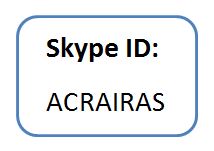In recent years, the Singapore government, or rather the Inland Revenue Authority of Singapore (“IRAS”) has introduced a number of incentives including the productivity and innovation credit (PIC) scheme to help businesses enhance their productivity and innovation.
Under the PIC scheme, businesses (sole proprietorships, partnerships and companies) which incur expenditures on any of the six qualifying activities can enjoy a 400% deduction / allowance (400% PIC claim) on up to $400,000 of the expenditure incurred per year in each of these six qualifying activities (hereinafter termed as qualifying PIC expenditure or QPE) for the year of assessments (YA) 2011 to 2015. The six qualifying activities are:
a) Acquisition / Leasing of information technology (IT) and automation equipment;
b) Acquisition / In-licensing of intellectual property rights (IPRs);
c) Registration of IPRs;
d) Research and development;
e) Training of employees, and
f) Approved Design Project
To provide flexibility, the QPE cap of $400,000 for each qualifying activity per year for YA 2013 to YA 2015 is combined, giving rise to a total QPE cap of $1,200,000. Therefore, the maximum PIC deduction or allowance is $4,800,000 per qualifying activity.
Alternatively, from YA 2013 to YA 2015, eligible businesses can opt to convert up to a maximum of $100,000 of the QPE incurred on all the six qualifying activities for each YA into a non-taxable, 60% cash payout (CP), thus giving rise to a maximum CP of $60,000 per YA. Eligible businesses are those that:
a) Incur QPE during the basis period;
b) Employ at least three local employees (Singapore Citizens or Permanent Residents with CPF contributions, excluding sole proprietors, partners under contracts for service and shareholders who are directors of the company), and
c) Carry on business operations.
Any amount of QPE converted into a CP will not be available for a 400% PIC claim and the QPE cap of $1,200,000 will be reduced accordingly by that amount.
Partial conversion to a CP is prohibited for QPE incurred in the following activities:
a) Acquisition of PIC IT and automation equipment, and
b) Acquisition and registration of IPRs.
For example, if a business acquires a qualifying automation equipment of $150,000, it may convert only $100,000 of the QPE to a CP, with the remaining $50,000 forfeited which is not available for a 400% PIC claim.
A business which incurs, for example, a QPE of $400,000, may choose one of the following three alternatives:
1) Make a 400% PIC claim on the entire QPE of $400,000
2) Convert $100,000 of the QPE to a 60% CP and make a 400% PIC claim on the remaining QPE of $300,000
The differences between alternative (1) and (2) lies in the treatment of the $100,000 portion of the QPE. In alternative (1), it is subject to a 400% PIC claim whereas in alternative (2), it is converted to a 60% CP. Thus, the chargeable income (CI) will always be higher under alternative (2) than alternative (1).
If you are experienced in this area of PIC claims, you even know that a third option is available. You can choose to Convert less than $100,000 of the QPE to a 60% CP and make a 400% PIC claim on the remaining QPE.
Being a professional accounting firm at J Accounting Services, we would like to take this time and opportunity to remind everyone that proper planning on PIC claims and utilization is crucial. This could affect your bottom-line tax payable to IRAS, as well as the underlying net cash outflow or inflow. If you are looking for Singapore government grant assistance on PIC claims, do take a look at what we have to offer you.




